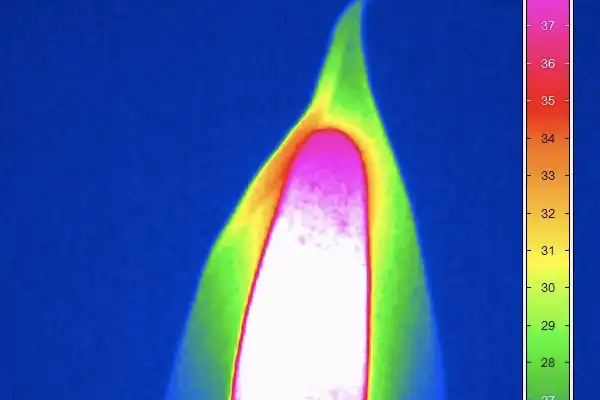In a new study published in The Plant Journal, researchers at the Royal Botanic Gardens, Kew, University of Hamburg and partners have developed new approaches to compare and investigate the ability of plants in the genus Amorphophallus to produce their own heat, exploring the highly varied temperature patterns and their evolutionary significance.
This ability to generate metabolic heat – known as thermogenesis – is much more common in animals and birds than in plants, but it has been documented in some plant families, most prominently the Araceae, also known as the arum family. The process of thermogenesis happens during the flowering stage of the plant and plays a role in the pollination process. Previously, it had only been recorded in a couple of species of Amorphophallus, which is one of the largest genera of Araceae, currently comprising 237 species. Amorphophallus is widely distributed across Africa and Australasia and is known to be morphologically diverse. A selection of Amorphophallus species develop large, dark inflorescences – cluster of flowers – accompanied by foul smells such as the impressive titan arum, which recently flowered at Kew Gardens.
For over 10 years as part of this study experts have been measuring the temperature of the plant genus Amorphophallus, with the hope to gather further understanding about the genus’ ability to create heat. A. longituberosus, a sweet-scented tropical species native to Southeast Asia was found to be the warmest temperature as part of the study, exceeding ambient temperature by 21.7°C. Many species of the Amorphophallus genus are considered vulnerable or critically endangered by the IUCN.
‘After painstakingly setting up a heat camera and a series of small devices on various Amorphophallus plants at the early stages of this project, I first couldn’t believe my eyes: as inflorescences developed, even some of the tiniest species were producing incredible amounts of heat – something that had never been reported by scientists for those species before. The large variation in heat production among closely related species opens exciting opportunities to examine the chemical pathways to heat production, the genetic architecture involved, and the mechanisms that can switch that function on or off through evolutionary history. This understanding could one day help create more frost-tolerant crops, expanding the growing season in temperate regions. By producing more food on the same land area, we would need less land for agriculture and could increase the protection of biodiversity in other areas.’
Professor Alexandre Antonelli, Director of Science at RBG Kew said.
‘Thermogenesis is rare in plants, which makes it fascinating to study. It occurs particularly often in the arum or aroid family, which contains more thermogenic species than any other. As part of this study, we found the temperature patterns are highly varied across the genera and even the species. The functions of plant thermogenesis have long been debated and it remains a contentious topic. The exact function, the contribution to successful pollination, its evolutionary impact in terms of speciation or species richness, the morphological requirements to thermogenesis are not well investigated, let alone fully understood. Further assessments of the remaining species are urgently needed to guide effective conservation strategies and safeguard the future of these unique and fascinating plants.’
Lead author PhD Student at University of Hamburg Cyrille Claudel said.
Read the paper: The Plant Journal
Article source: Royal Botanic Gardens, Kew
Image: A. longituberosus showing an impressive heat of 21.7c above air temperature under a thermal camera. Credit Cyrille Claudel, Botanic Garden Hamburg






